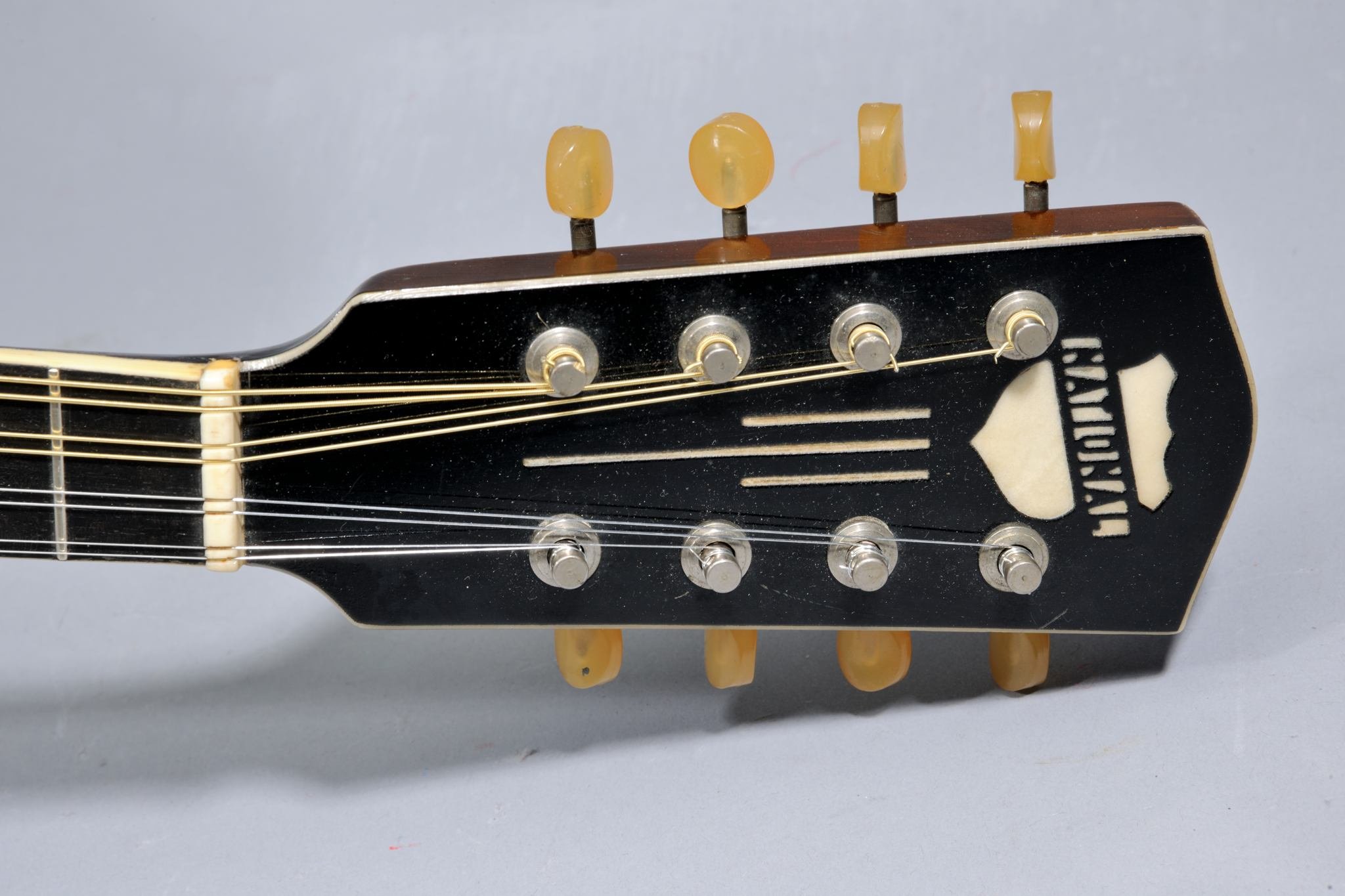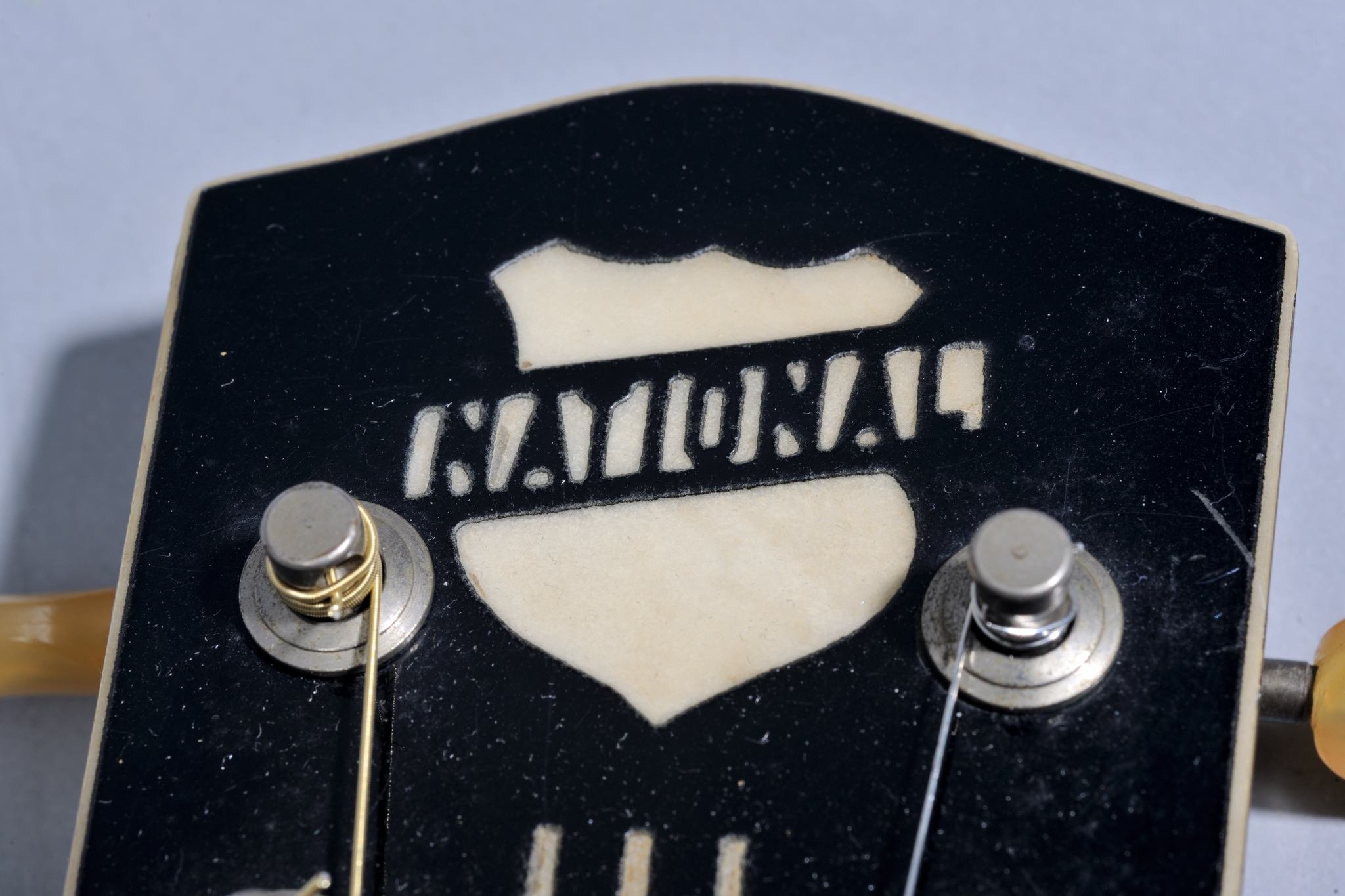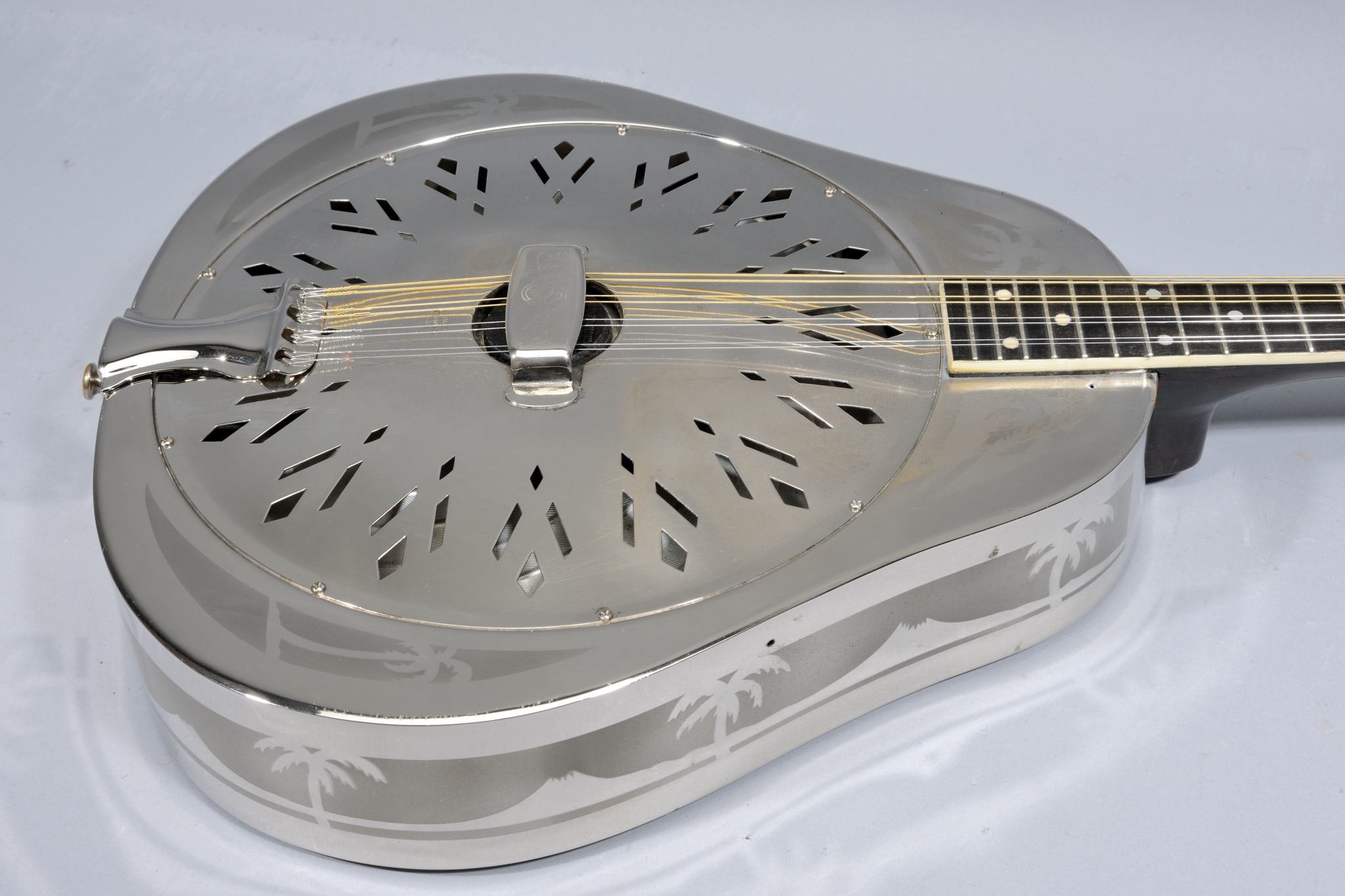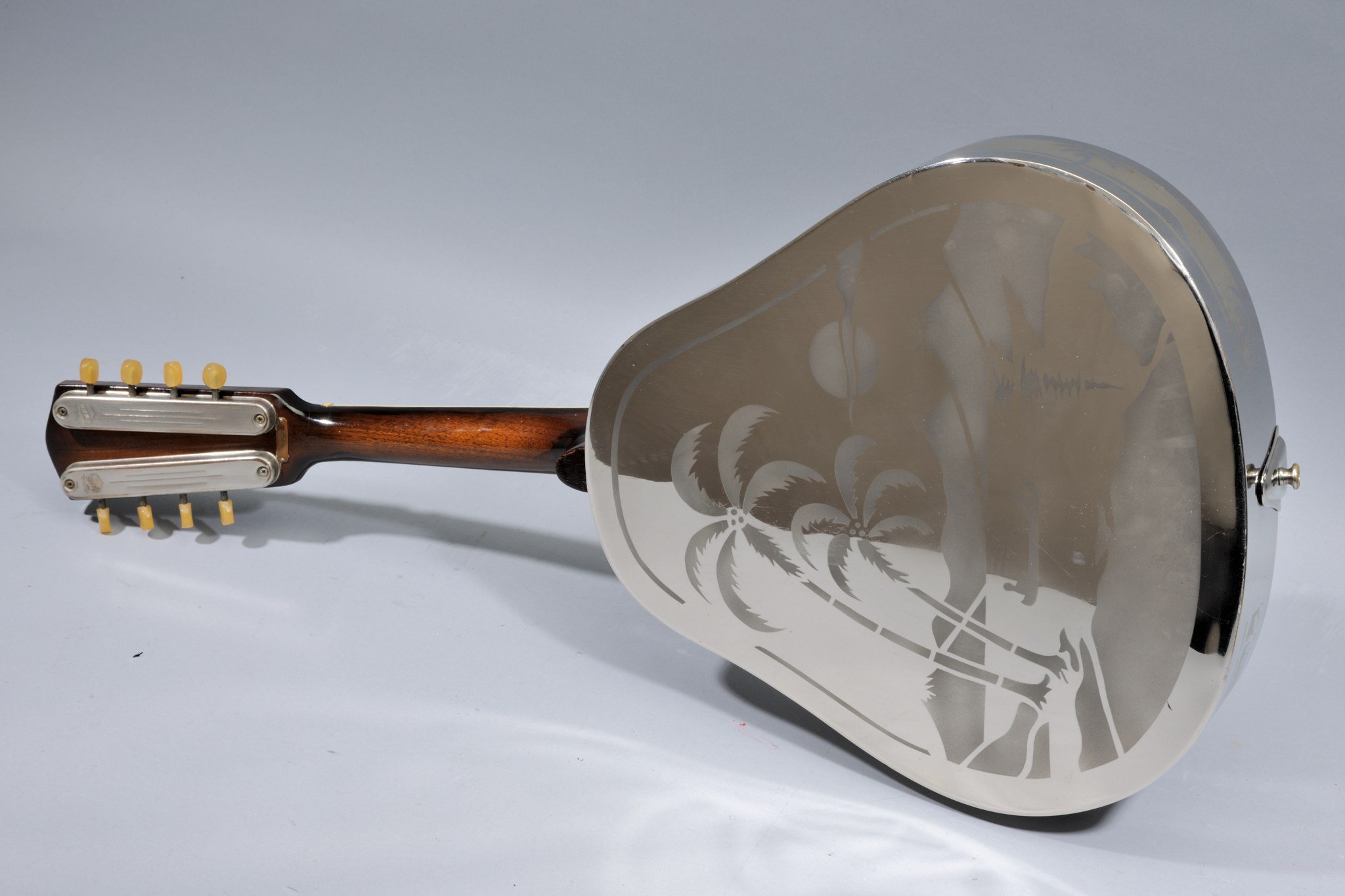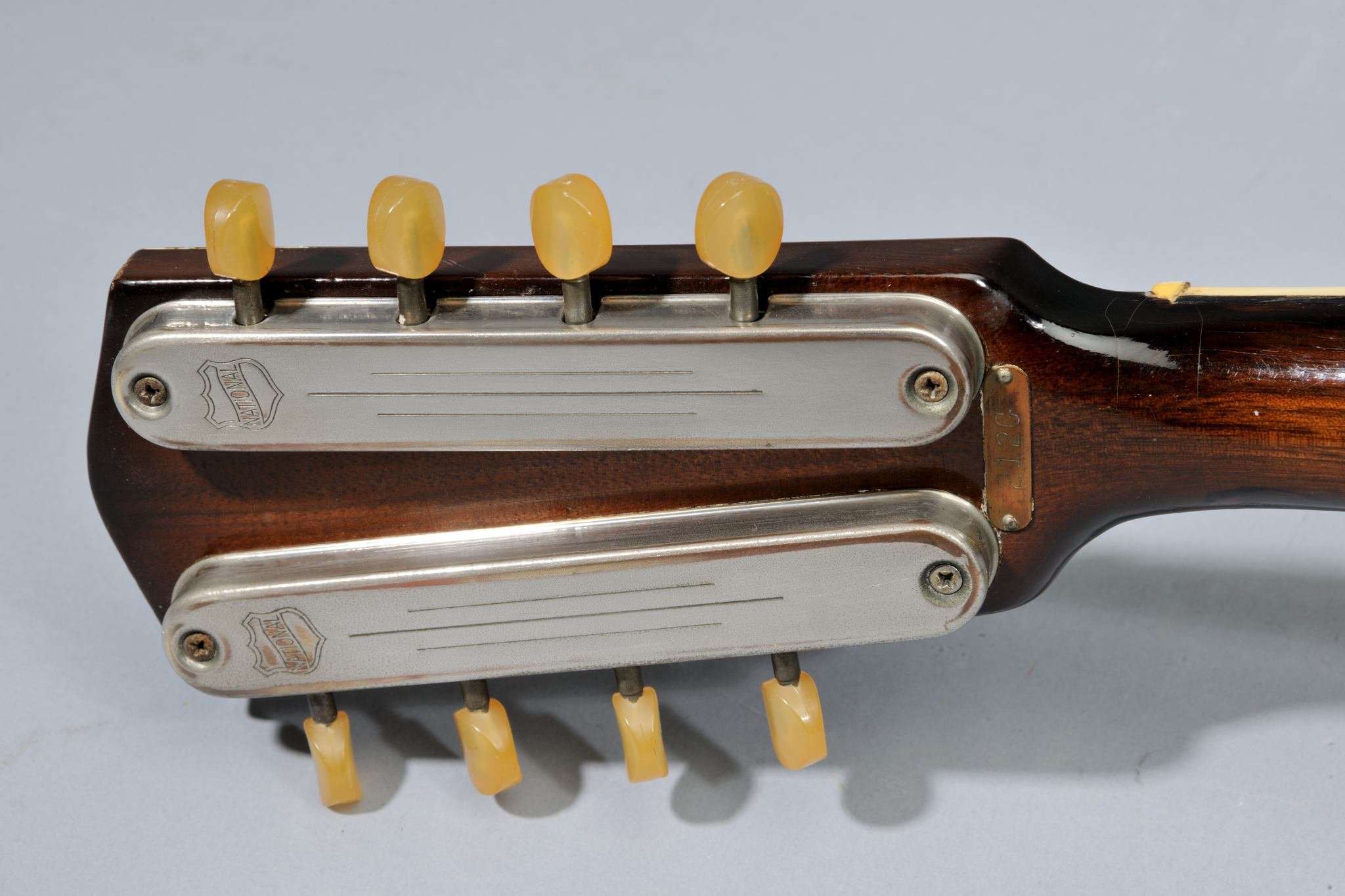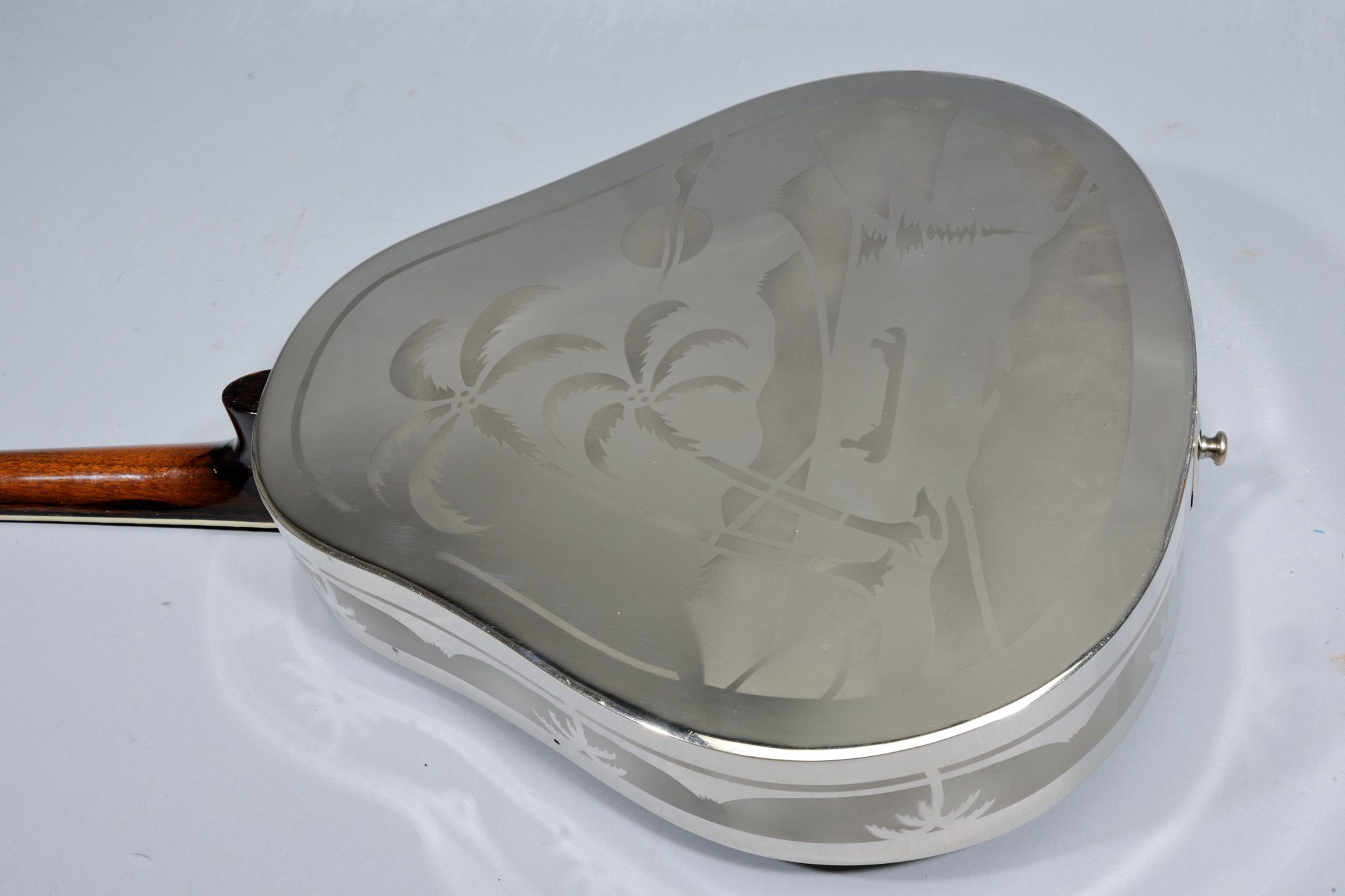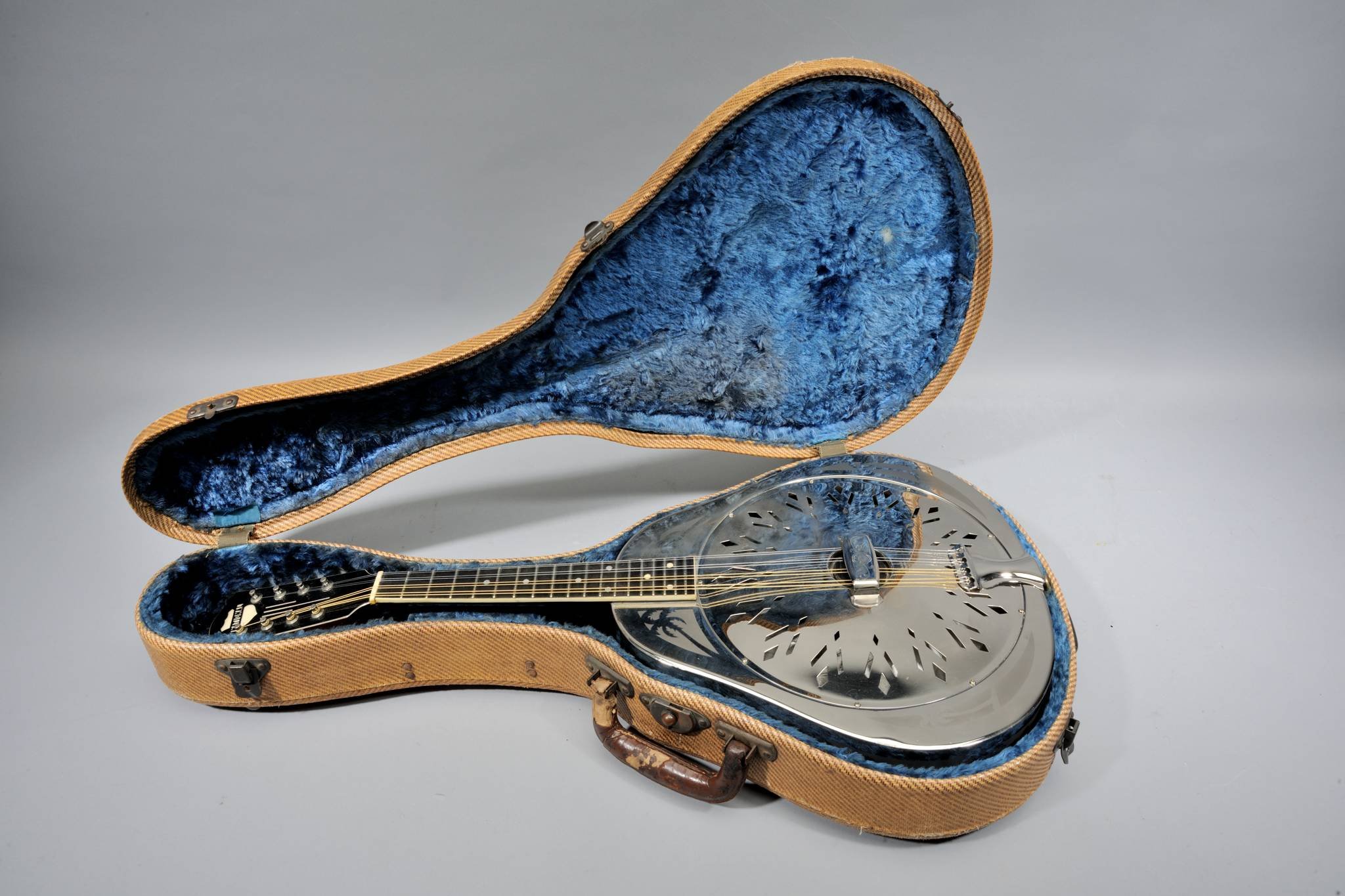National 1940 Mandolin Resonator Style «O»
National 1940 Mandolin Resonator Style «O»
National 1940. Mandolin Resonator Style «O».
Chickenfoot Coverplate & Paddle Headstock.
Chicago number series #212G.

Per Bob Brozman, the “G” series of National prewar serial numbers dates from 1940 to 1941. Unbelievably enough, he actually lists this very mandolin – it’s on page 278 of his essential reference book about Nationals. He calls it a “#0 Mandolin Late Style.” There are two other mandolins listed in that section. By “late style” we believe he means that it has the “chicken feet” cover plate, just like the 14-fret Style O guitars such as the one that appears on the cover of Dire Strait’s Brothers in Arms. It has the celluloid-bordered ebony fingerboard, and the ivoroid bordered, polished black headplate bearing the National name in a parallelogram near the center of an ivoroid crest with the triple art deco “Chorus of Yums” appearing below. The cover plate is held in place by 9 roundhead Phillips screws starting at the 12 o’clock position.
What makes this mandolin majestic, notwithstanding that it was already knightly just from being a nickel-plated brass-bodied semi-triangularly shaped body mandolin from the era of The Greatest Generation, is that it has a rose engraved on the cross piece that one’s hand rests on at the center of the cover plate, over the black biscuit bridge. In addition it has the sand-etched Hawaiian scenes on top, sides and back depicting the archipelago, the twin palm trees, the 3 inactive volcanoes, the dual canoeists, the clouds and the setting sun, and that’s just on the back, there’s also volcanoes and palm trees in a repeating pattern on the sides and at least 3 more trees on the front. This mandolin once had a pickguard, but that has long since gone to cellulose-nitrate heaven leaving behind a down-to-the-brass coloration to the upper treble bout and two screw holes in the metal. Said nickel-plated metal shows a few normal dings, light scratches and cloudiness – as one would expect – but the dark sunburst back of the mahogany neck, aside from a few crazing lines is quite amazingly clean, suggesting that this wasn’t played all that much. It bears the long scale of 14 7/8” (approximately), with a fretboard width of 1 3/16th which we deem the most comfortable width for a mandolin.
The tailpiece is shiny and could be chrome-plated. The serial number appears on a brass plaque behind the nut and the tuners are encased in two oblong gear covers, each bearing the National crest and logo and the three art-deco stripes; its original tuner buttons are caramel-colored pearloid. Uncommon pieces like this are fascinating and there really are not a lot of them in circulation. Heck, Brozman annotated only 3. National mandolins are among the loudest of all 8-stringed critters. Artistically, it sets itself apart from the enervated and the mundane – evoking a vision of the prewar era when ensembles were loud and only the stentorian could cut through. Its sound is that of string band music from a lost era, as heard on a 78-RPM record in a vision wherein the entire family is sitting around the wooden cabinet containing the radio, everyone dressed up in tattered yet serviceable clothing, the dominant color of which is gray.



